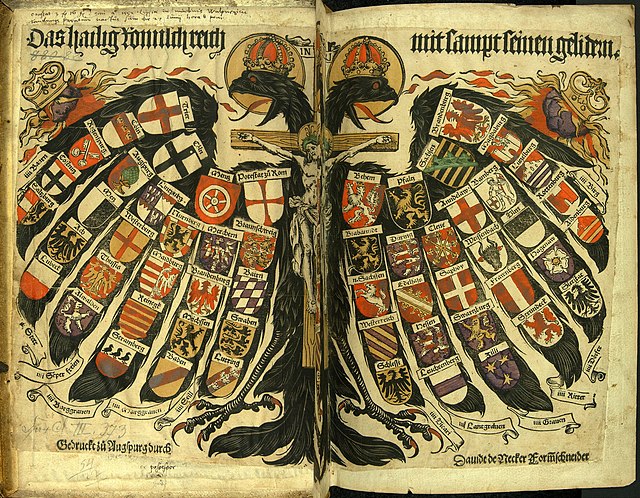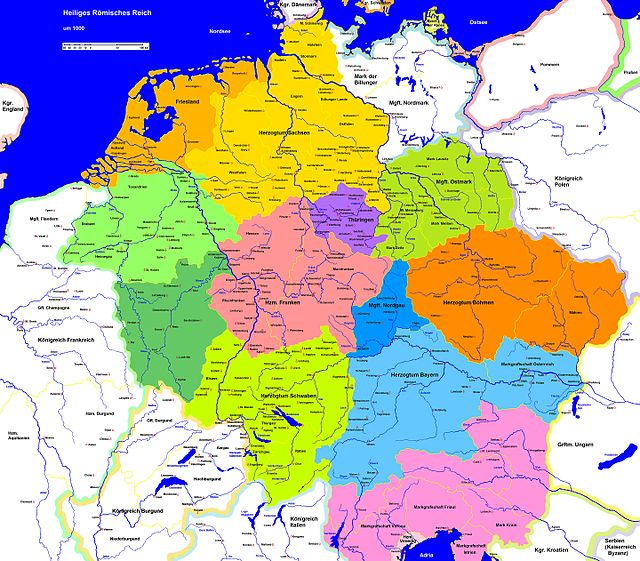An Imperial State or Imperial Estate was a part of the Holy Roman Empire with representation and the right to vote in the Imperial Diet. Rulers of these Estates were able to exercise significant rights and privileges and were "immediate", meaning that the only authority above them was the Holy Roman Emperor. They were thus able to rule their territories with a considerable degree of autonomy.
Seating order of the Perpetual Diet of Regensburg (1663 engraving)
A "Quaternion Eagle" (each quaternion being represented by four coats of arms on the imperial eagle's remiges) Hans Burgkmair, c. 1510. Twelve quaternions are shown, as follows (eight dukes being divided into two quaternions called "pillars" and "vicars", respectively): Seill ("pillars"), Vicari ("vicars"), Marggraven (margraves), Lantgraven (landgraves), Burggraven (burggraves), Graven (counts), Semper freie (nobles), Ritter (knights), Stett (cities),
The Holy Roman Empire, also known as the Holy Roman Empire of the German Nation after 1512, was a polity in Central and Western Europe, usually headed by the Holy Roman Emperor. It developed in the Early Middle Ages and lasted for almost 1,000 years until its dissolution in 1806 during the Napoleonic Wars.
The double-headed eagle with coats of arms of individual states, the symbol of the Holy Roman Empire (painting from 1510)
The Holy Roman Empire during the Ottonian dynasty
Henry begging Matilda of Tuscany and Hugh of Cluny in Canossa Castle (miniature in an illuminated manuscript kept in the Vatican Library, 1115)
Frederick Barbarossa, Holy Roman Emperor





